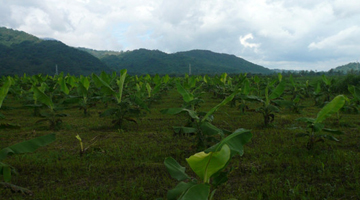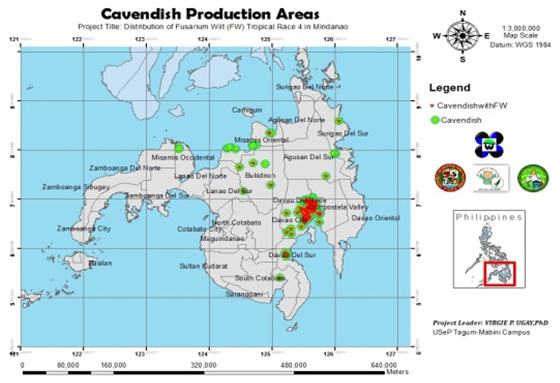 Funding for five R&D projects on banana were approved anew recently by the Department of Science and Technology and PCAARRD. The projects are part of PCAARRD’s Industry Strategic S&T Plan (ISP) for banana.
Funding for five R&D projects on banana were approved anew recently by the Department of Science and Technology and PCAARRD. The projects are part of PCAARRD’s Industry Strategic S&T Plan (ISP) for banana.
Four of these projects focus on reducing disease incidence of banana bunchy top virus (BBTV) and Fusarium wilt in major banana-growing areas.
One of these four projects evaluates the performance of a new BBTV-resistant lakatan across locations. It is led by the University of the Philippines Los Baños (UPLB) in collaboration with Cavite State University, Quirino State University, and Bureau of Plant Industry-Davao National Crop Research and Development Center (BPI-DNCRDC).
BBTV is the most destructive virus disease of banana in the country as its severe incidence could wipe out a plantation. Since it has no known cure, the development of built-in resistance in lakatan was identified as an effective management strategy to control its spread.
The project on the evaluation of the performance of a new BBTV-resistant lakatan is expected to provide small farmers with disease-resistant cultivars for them to achieve a more profitable production.
During the first year of implementation, the project team surveyed experimental sites in Laguna, Cavite, Quirino, and Batangas. They also established 13 trial sites and 19 demonstration areas. Results from the trials will serve as bases for deployment of BBTV-resistant lines in the future. The project is expected to end in 2016.
Fusarium wilt tropical race 4 (TR4), another major banana disease, is being addressed by the program titled “S&T management approaches against Fusarium wilt on ‘cavendish’ in Mindanao.” The program has three component projects and is nearing its third year of implementation.
As more and more plantations are affected by the disease, PCAARRD will continue to fund the program to assess the performance of seven giant cavendish tissue-culture variant somaclones and determine the efficacy of commercially available microbial agents against the fungal pathogen, Fusarium oxysporum f. sp. Cubense (Foc). These include MykoVAM, effective microorganisms, Bacillus subtilis, Trichoderma harzianum, and plant growth-promoting rhizobacteria.
 The program is also set to develop strategies to effectively deliver the microbial agents to the soil.
The program is also set to develop strategies to effectively deliver the microbial agents to the soil.
Currently, the Foc research team is field testing the reaction of the somaclones against Fusarium wilt in ten experimental sites in Davao del Norte, Compostela Province, and Davao City.
The team also mapped the Fusarium wilt incidence in Mindanao and identified the races through polymerase chain reaction. Data gathered will later be used as bases for strict quarantine implementation.
The program is being coordinated by the Southern Mindanao Agriculture and Resources Research and Development Consortium. The implementers are the University of Southeastern Philippines (USeP), Southern Philippines Agri-business and Marine and Aquatic School of Technology, BPI-DNCRDC, and UPLB in collaboration with Bioversity International, Philippine Banana Growers and Exporters Association, National Mapping and Resource Information Authority, and local government units.
The renewal of these R&D projects is a welcome development in the banana industry. Upon completion, these initiatives are expected to support the Philippine banana industry through effective disease management. Such efforts will keep the country on top of the global trade by having a sustainable supply of banana.
